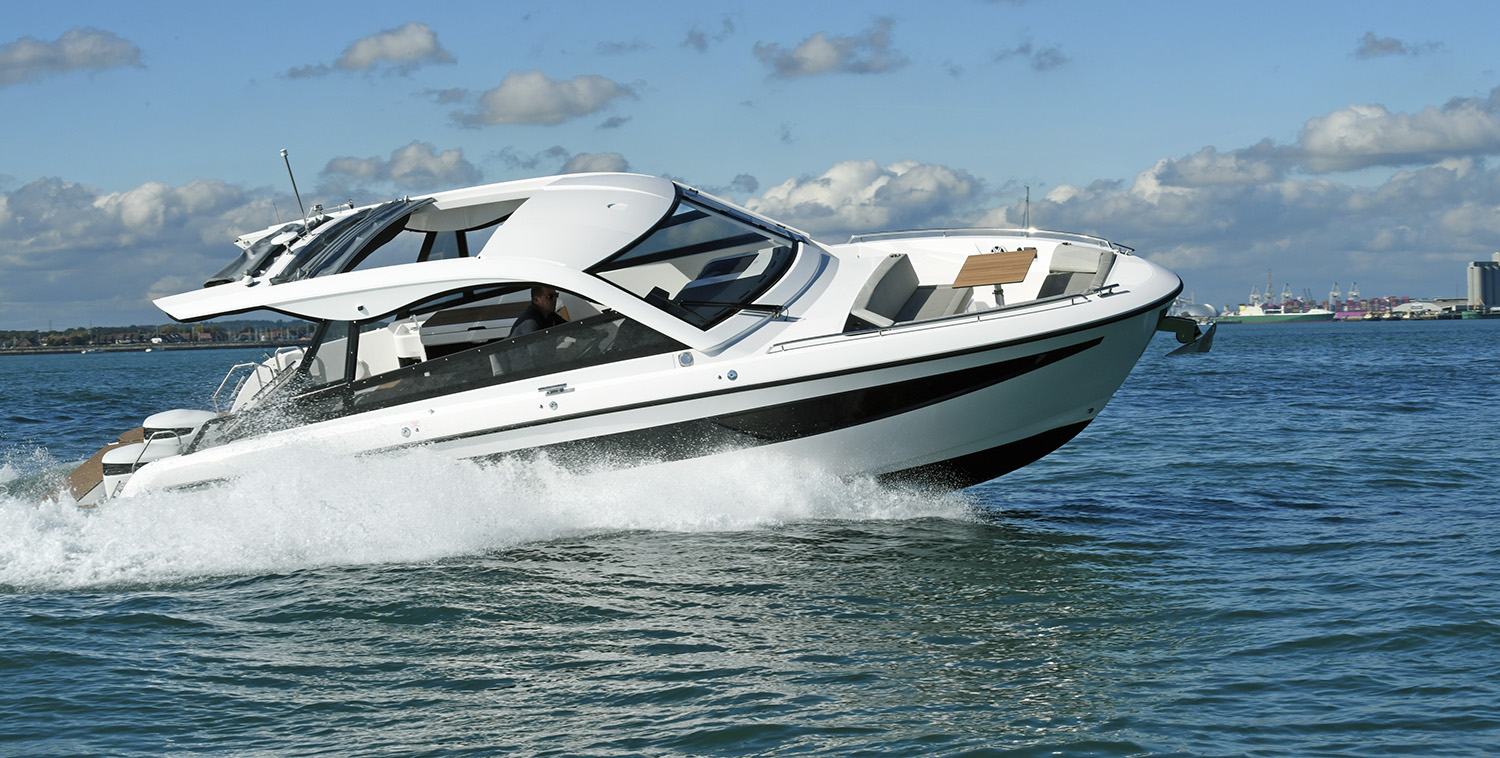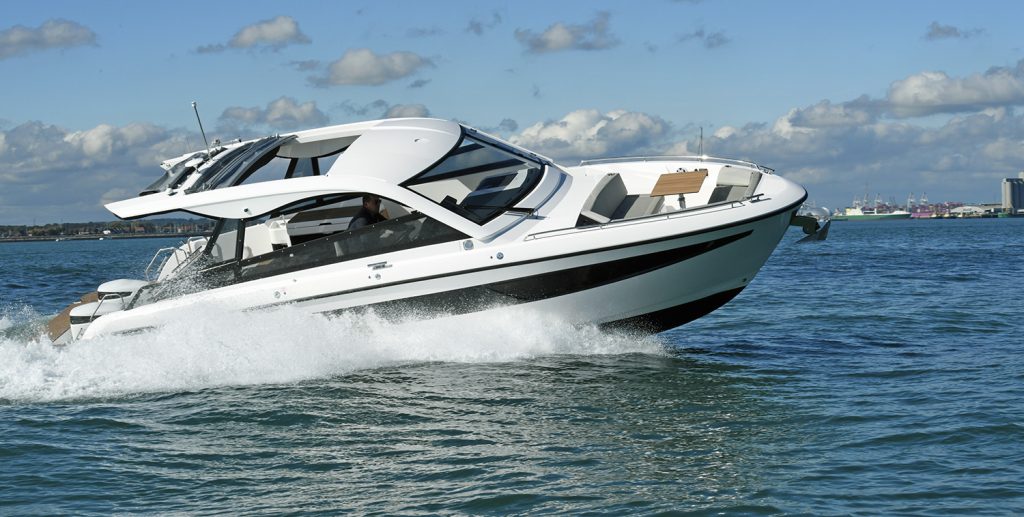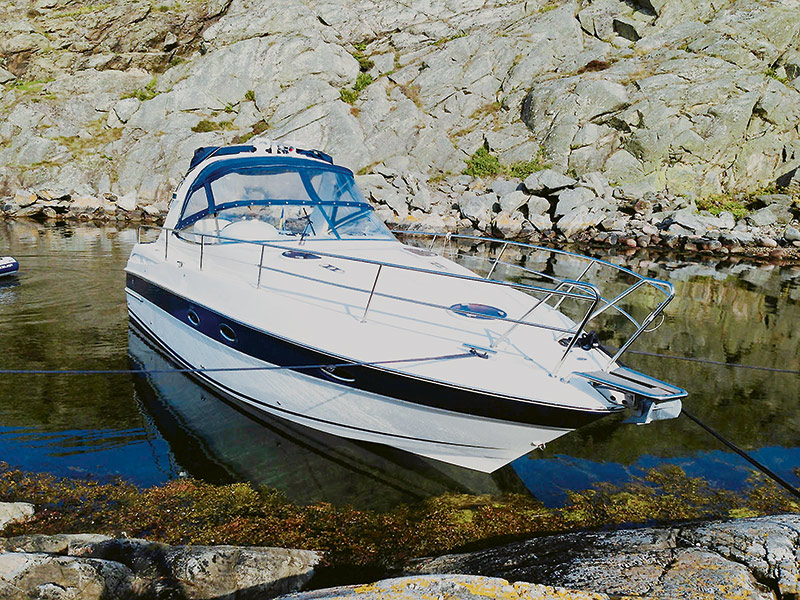In recent years, yacht design has become more closely focused on user requirements. Less one size fits all, and more tailored to needs. Bavaria‘s Vida 33 illustrates this well. Technically not new, as the Vida Mk1 was launched a few years back. The new Mk2 though similar, is now powered by Suzuki rather than Mercury outboards. It is an extremely versatile day boat though it can certainly cover some sea miles if required. Its main skill set is providing a great day out, or for a couple on a weekend getaway. It has just one cabin, but its topside design is extensive, stretching its beamy design to the limit. It is actually 36ft in length with the bathing platform, and the absence of side decks coupled with a tall hardtop give it a powerful presence.
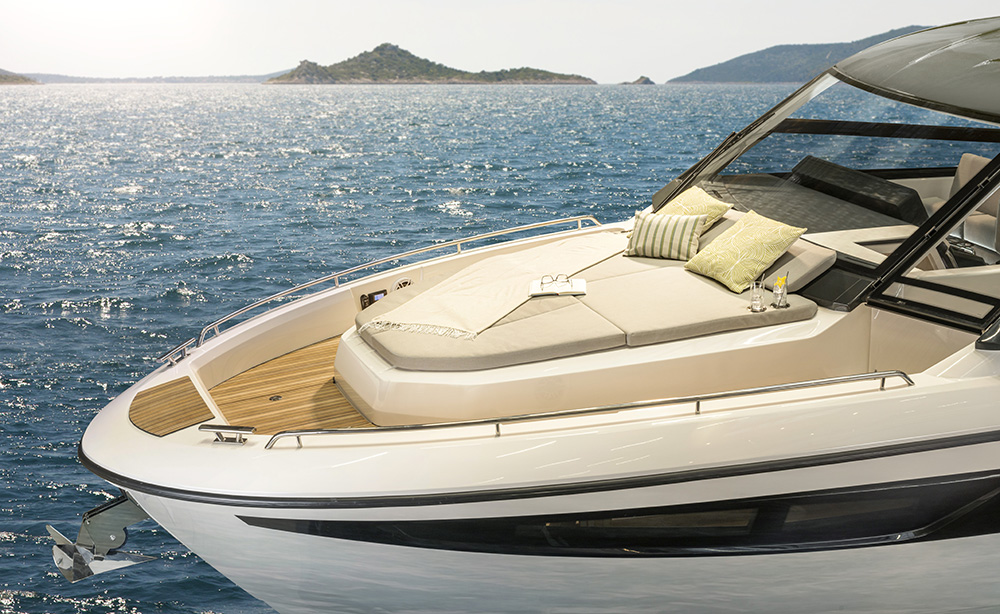

Greg Copp
Try out the Configurator!
Grab a coffee and try out the Bavaria Vida Configurator…
What choices would you make?



Deck Design
The most striking aspect of this boat’s deck design is the wrap-around bathing platform. This comes in three forms: No platform aft of the engines, a manually tilting aft platform, or a hydraulic hi/low platform. Our test boat was fitted with a manual platform which is a £5000 extra, enabling the engines to be trimmed clear of the water once the platform is tilted back. The hi/low platform costs around £20,000 (providing stern-to access to tall docksides, as well as a water level bathing platform that can be used to recover tenders and water toys).
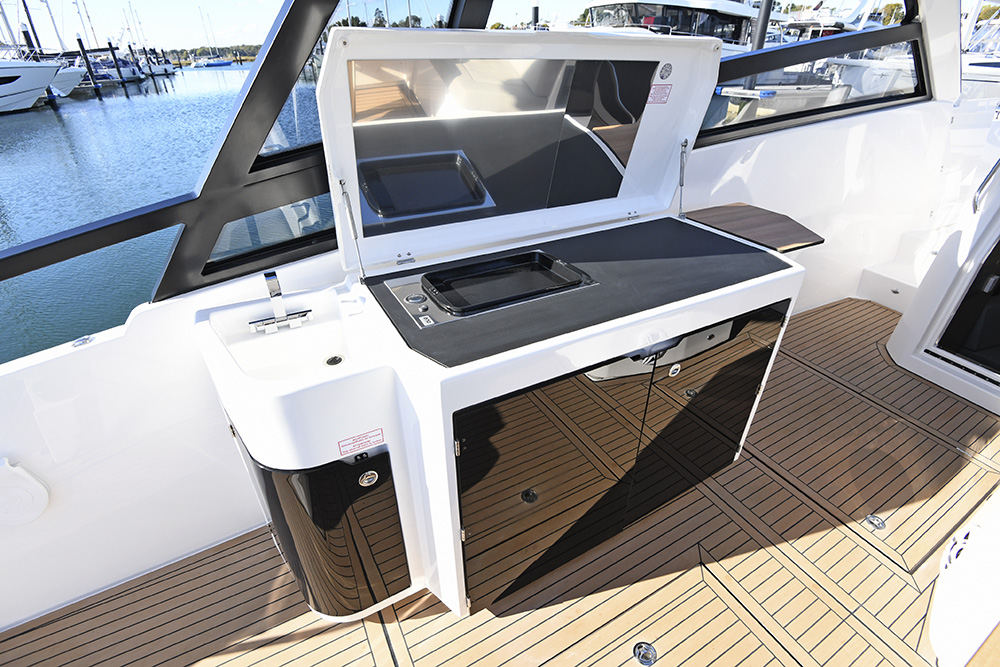

Greg Copp
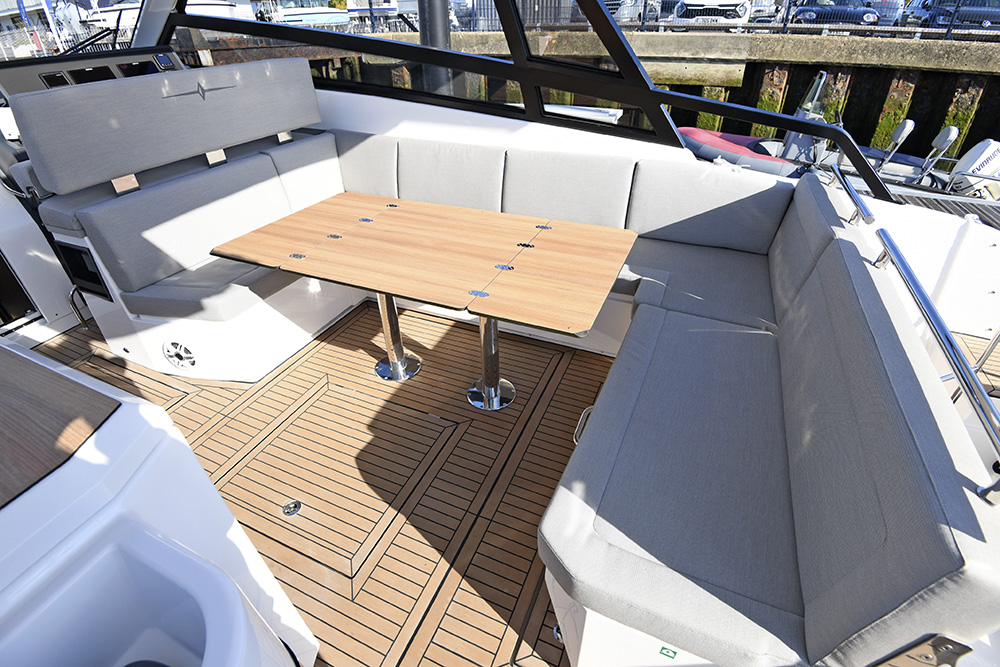

Greg Copp
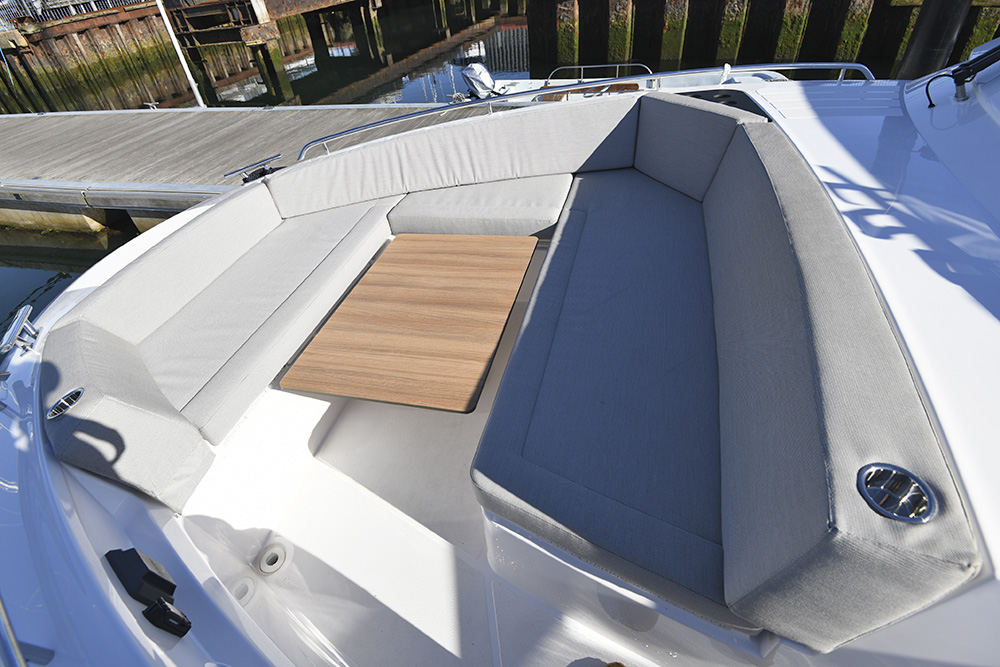

Greg Copp
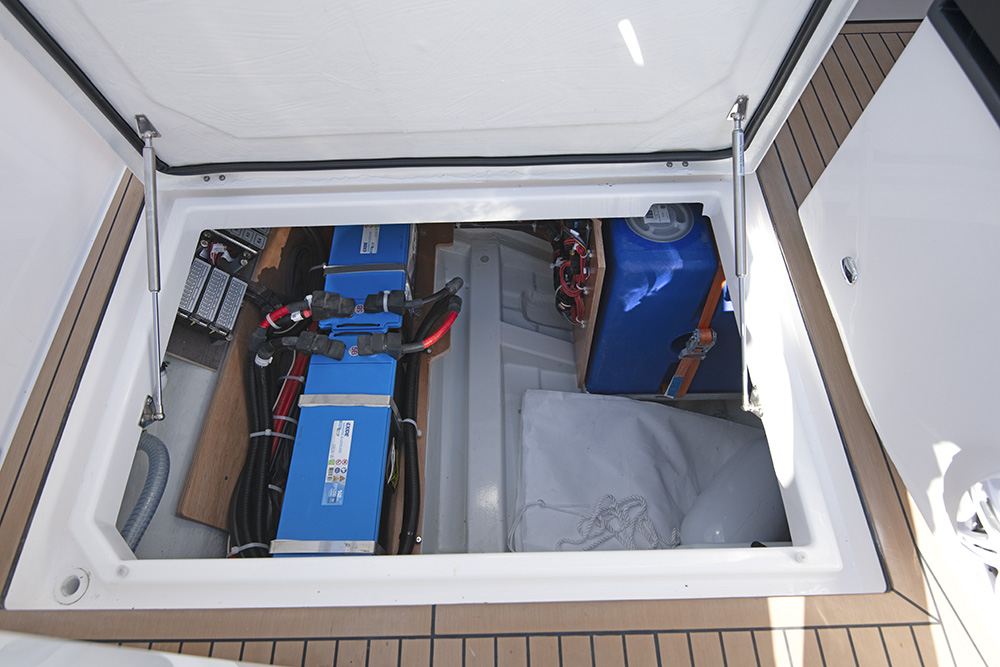

Greg Copp
The space onboard is huge for a 33 footer. Having and needing no side decks, you get acres of room (enabling the design to accommodate a suitably large sofa setup). The table can drop down to create a gigantic sun bed, which is further expanded by the rear sofa back rests folding flat. The wet bar either comes with an electric or gas grill, or a combination of both, with a rubbish bin and sink on its aft end. The fridge is a generous 80 litres, which can be complemented with an extra drawer fridge beneath the sofa (while a full height cupboard sits under the cook top). The hardtop design incorporates two manual canvas sunroofs, which combined with narrow mullions, equates to plenty of natural light. The Vida has that open boat feel, but with the advantages of being a hardtop. There is also an optional cover set when you want full enclosure.
The foredeck section is available in two options: As featured with bow seating and drop down table, which converts to a sunbed when needed. This provides an elevated spot over-looking the water, as well as enclosed deck access to the forward anchor locker. The alternative layout has a sun bed with shallower side decks. Both options have low fender rails, and like the rest of boat, decking is teak with synthetic Esthec an extra. All cleats are substantial, as is the £6000 windlass feeding a through-stem stainless anchor.
Watch the Bavaria Vida video by Bavaria Yachts.
Below Deck Accommodation
There are two options here. The first accommodates the seating design above, and so has slightly less headroom. Nevertheless it still has a dinette sofa, which with the drop-down table creates a small double bed (and is far from cramped). The alternative forward cabin has the benefits of having a sunbed atop, with a longer coach roof and subsequently more headroom below. As the forward side decks are shallower, the cabin design makes use of this extra room on either beam, and as a result the double bed is larger. Both designs have a full height heads compartment, comprising of sink, electric toilet, and shower. All the cabin joinery is nicely finished in American Walnut.
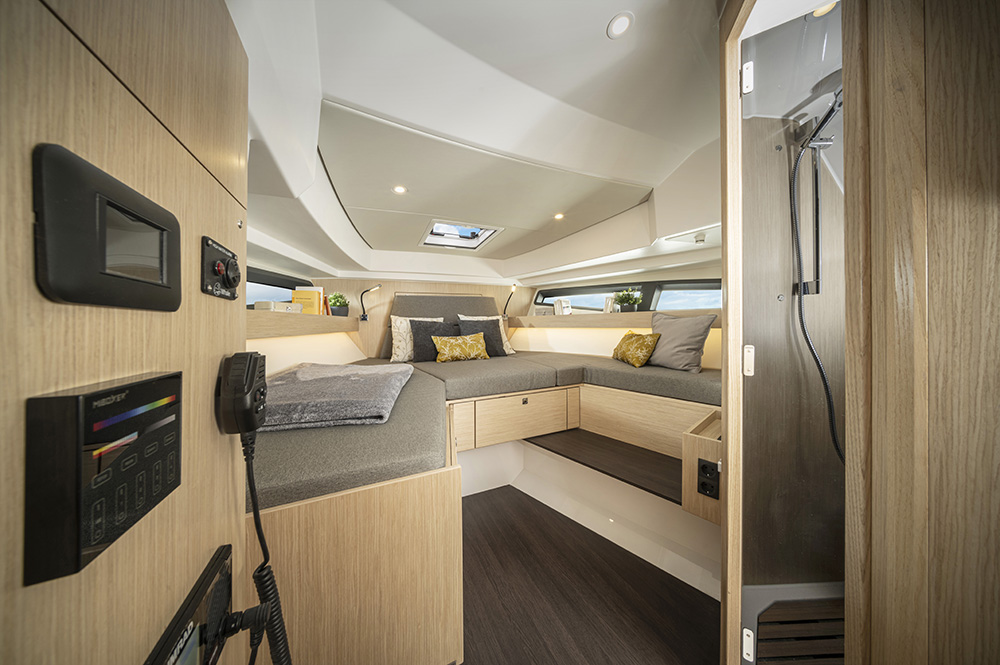



Storage
This is where outboard boats trump vessels with stern drives. As a result, below the cockpit sole there is a chasm of storage. If you lift the aft cockpit hatch you will find a void which simply swallows the cockpit covers, and all the cruising gear that you inevitably accumulate… and then some. Accessing this hatch is a case of lifting up the aft seating section connected to it. Unlike the Mk1 which has a sliding seat the Mk2 has a fixed rear seat. This said it is pretty easy and ably assisted by gas struts. The hatch forward of this provides access to the fuel tank, and then in front of the wet bar you can easily get to the batteries. With such an expanse of seating, there is inevitably and expanse of under-seat storage as well.
Try out the Configurator!
Grab a coffee and try out the Bavaria Vida Configurator…
What choices would you make?



Engines
The Mk2 now comes with Suzuki outboards: 2 x DF200s, 2 x DF250s or 2 x DF300s. In its previous incarnation Mercury Verados were the choice, and both brands feature a joystick system (though the previous Mercury system could incorporate a bow thruster, which the Suzuki setup can’t). Like Mercury, Suzuki’s DF range has an auto trim system. In terms of the most suitable engine option on offer, I would say the DF300 is certainly the best choice. Pushing a beamy 33ft five ton boat (dry) with a full crew complement takes a fair chunk of power. In terms of cruising potential, at 30 knots with twin DF300s you will get a range of 160 miles with a 20% reserve.
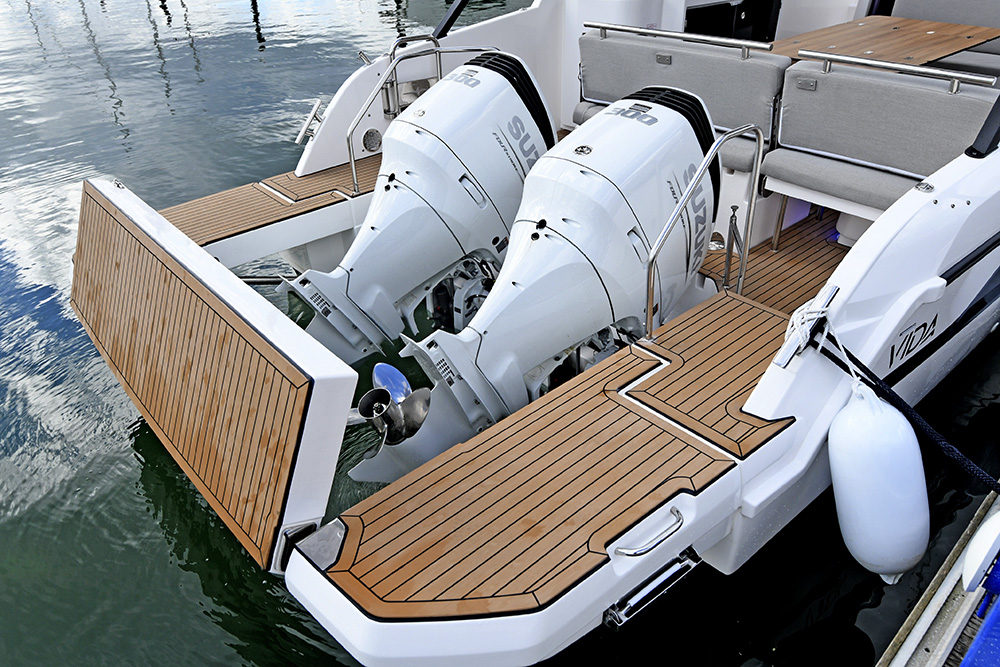

Greg Copp


Greg Copp
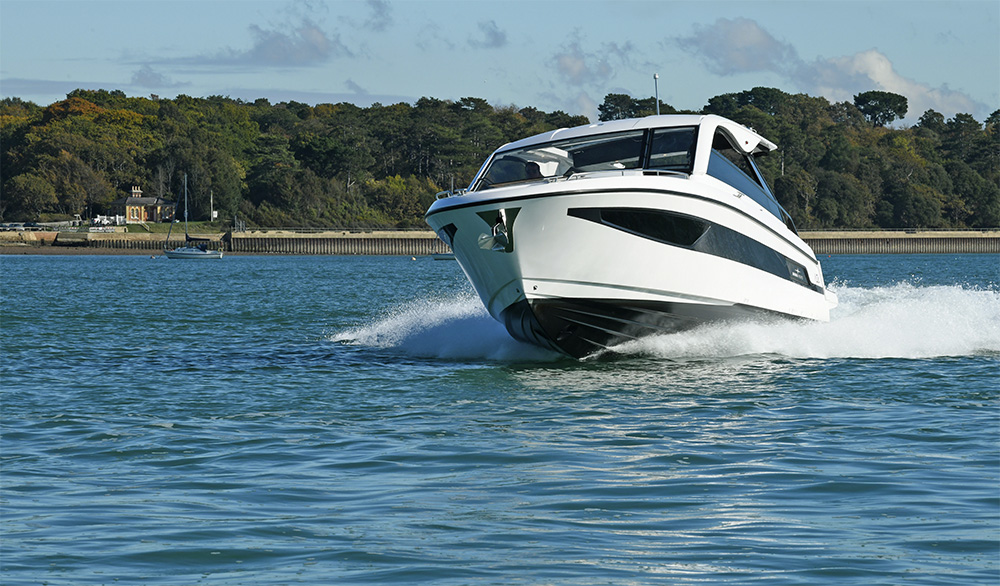

Greg Copp
At the Helm
This is a boat where seated surpasses standing. It is seriously elevated and so you need to use the foot bar. Not surprisingly forward visibility is very good. A wide dash faces you, which looks slightly Spartan with the base option of twin 9inch Simrad MFDs (12 inch units would fill it nicely). Like any hard top boat, turning to port the roof line creates a blind spot for the helmsman. You need to duck down and take a good look over your port quarter, before tucking into the tight turns this boat is remarkably good at. For a big beamy boat she is unusually quick on her feet, excelling at hard lock turns. You will soon find yourself getting close to dipping the rubbing strake. Not the sort of driving if you have the mother-in-law on board, but ideal for spirited water sports. The reaction to the wheel is light and balanced, and the hull holds a steady line in the corners.
I initially thought this boat had a medium-vee hull, but the angle of heal when turning indicates a mild deep-vee. When running into the ‘creeping ferry wake’ that stalks Southampton Water, I did not experience the sort of ‘bum-jarring knocks’ I was expecting. There were some complaints, but nothing of any concern, and none of the sort of ‘fitting-creaks’ that have you backing off.
In terms of power I personally think that the twin 300hp outboards is the preferred choice, especially considering how many people the Vida can hold. With the DF300s you need to get this boat running at a least 3800rpm before she is content, and at 4500rpm (running close to 28 knots), the Vida is properly composed. Below 25 knots she has a small degree of bow-up attitude likely not helped by the bathing platform sitting behind the engines. Is this a problem? Not really, and a set of trim tabs would correct it should this bother you. Considering this boat’s potential crew load, this would not be a bad idea. She runs up to just over 40 knots, quickly reaching this speed once past 25 knots (with the twin Suzuki V6s howling like banshees). Suzuki’s Auto Trim ably does its stuff, and manually over-riding it made no difference at any speed. It is best left in point and shoot mode, as it is quite capable left to its own devices and quickly tucks in the motors for the turns.


Greg Copp
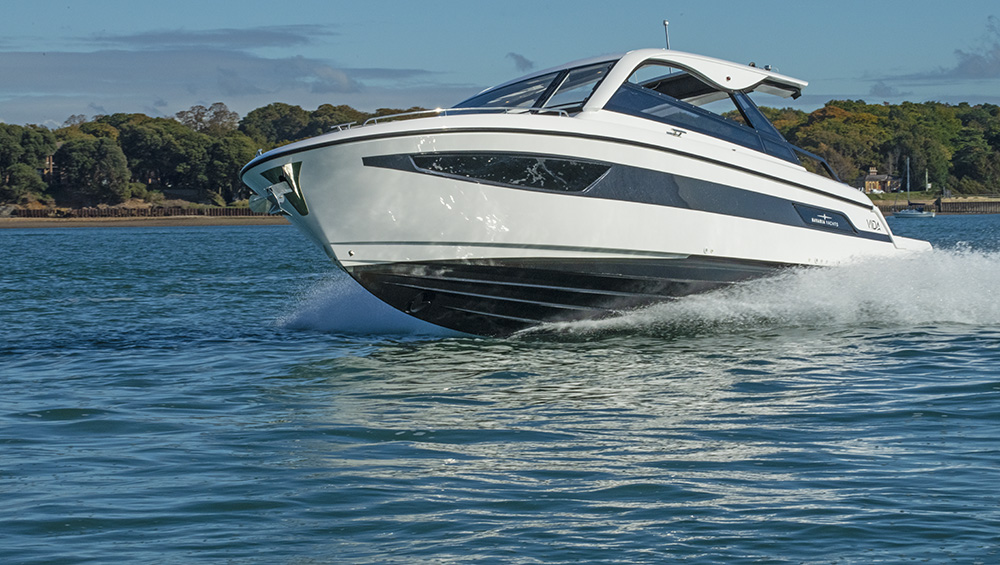

Greg Copp
Verdict
The Vida 33 has been built for what petrol powered sports boats get used for (day boating and water sports). As a result it does not try to squeeze in a token under-sole cabin, which would otherwise compromise the cockpit design. The topside design is very accommodating and safe, enhanced by a wide beam that provides good stability (underway or otherwise). Coming from J&J Yacht Design, a company known for solid sea-capable boats that are sensibly priced, the Vida 33 is a tough competitor for its rivals. Stack up what you get and what it costs, and you will see that this German built boat means business (especially as there are now RIBs with bigger price tags).
Explore layouts, options and pricing for the VIDA 33
Explore the Bavaria Vida 33 at Clipper Marine
Fuel Figures (Suzuki fuel flow meter)
| RPM | Speed (knots) | NMPG |
| 1500 | 5.0 | 1.4 |
| 2000 | 7.0 | 1.4 |
| 2500 | 8.3 | 1.0 |
| 3000 | 10.3 | 1.0 |
| 3500 | 15.4 | 1.1 |
| 4000 | 23.0 | 1.4 |
| 4500 | 29.5 | 1.3 |
| 5000 | 33.5 | 1.2 |
| 5500 | 38.0 | 1.2 |
| 5900 (WOT) | 40.8 | 1.0 |
Performance
40.8 knots (2 way average) sea conditions F2, crew 2, and fuel 30%.
0 to 30 knots: 16 seconds
Specification
| LOA: | 11.19m |
|---|---|
| Beam: | 3.43m |
| Hull: | Planing non-stepped. |
| Displacement: | 5.0 tonnes (dry) |
| Power options: | Twin 200hp/250hp/300hp Suzuki outboards. |
| Fuel capacity: | 700 litres |
| RCD category: | C for 8. |
| Design: | J&J Yacht Design |
| Price: | Price from: Price from: £238,624 inc VAT (twin DF200s) including commissioning and delivery to UK. Price as tested: £331,566 inc VAT (twin DF300S) including commissioning and delivery to UK. |
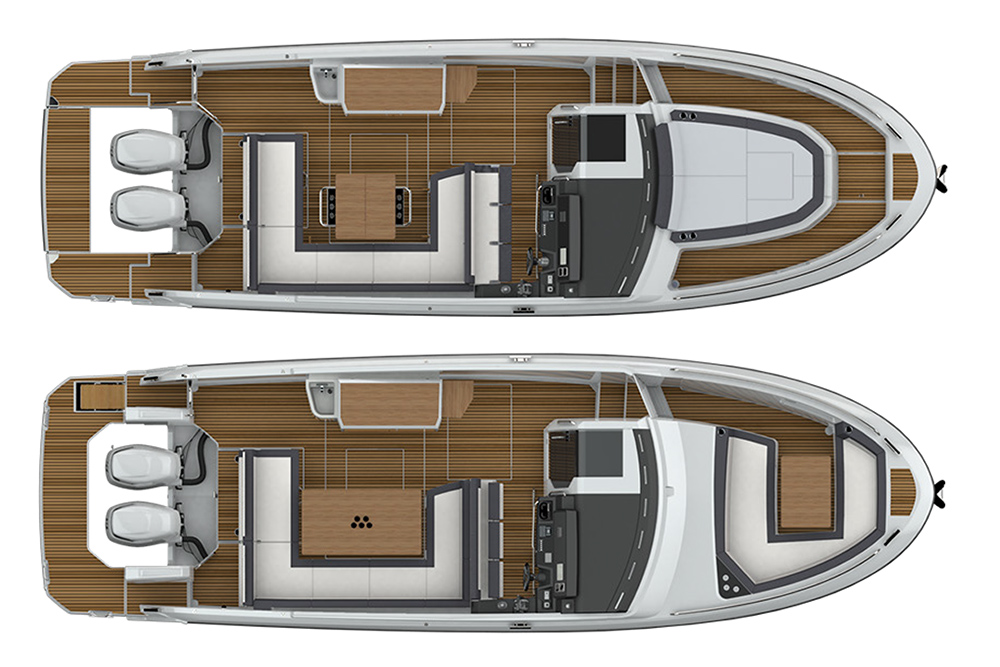

Final Verdict
Pros
Fast and precise steering.
Solid build quality.
Hangs on in tight turns.
Space on deck.
Good helm.
Huge amount of storage.
Great social dimension.
Optional hi/low bathing platform.
Cons
Twin Suzuki DF350 twin-prop outboards should be an option.
Stay in the loop with our Readers’ Bulletin email.
No spam, just fabulous content, latest news and occasional offers from our advertisers.
